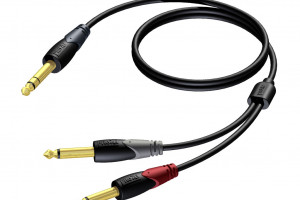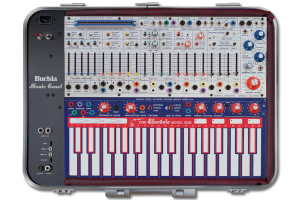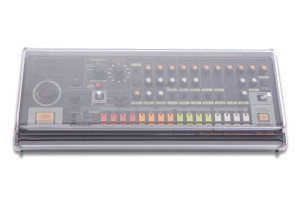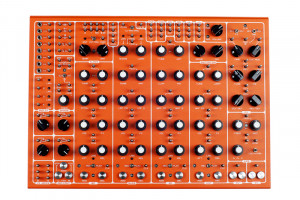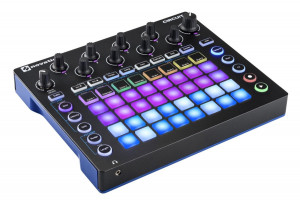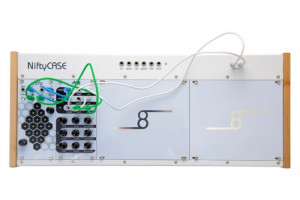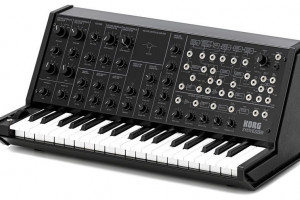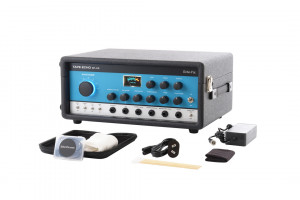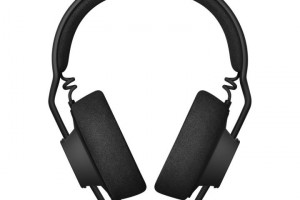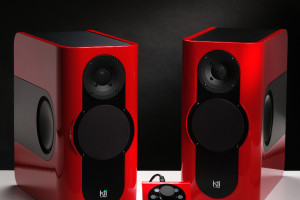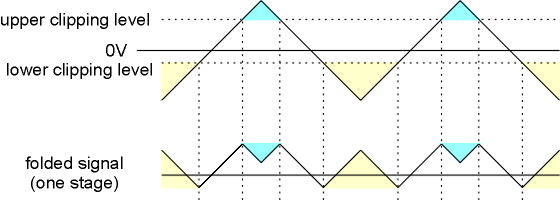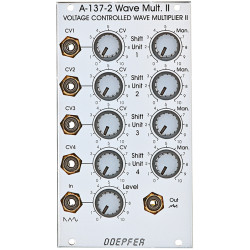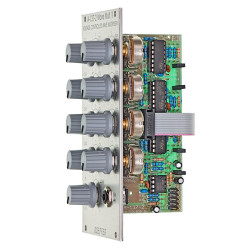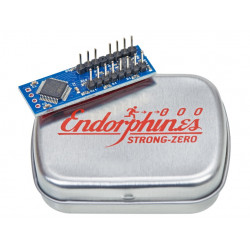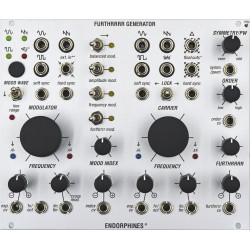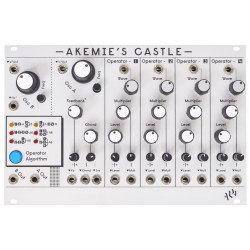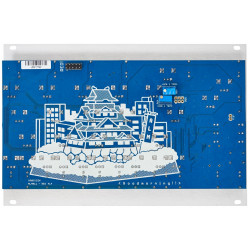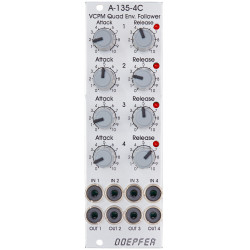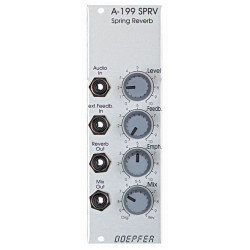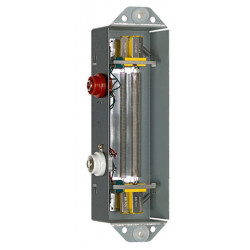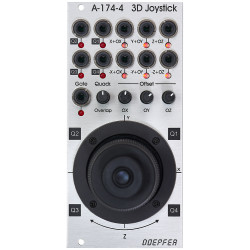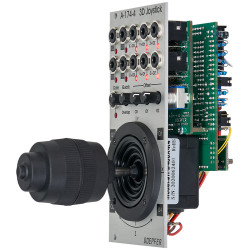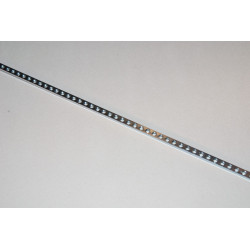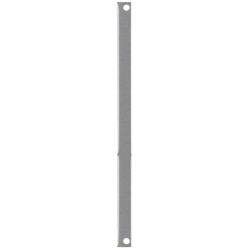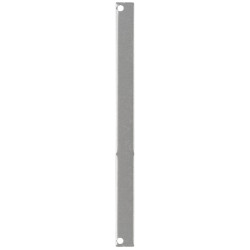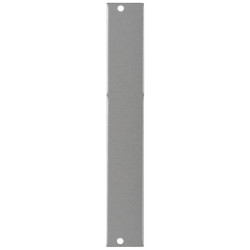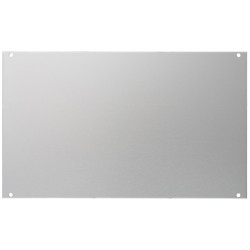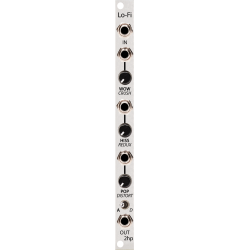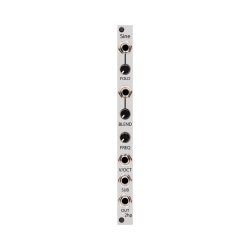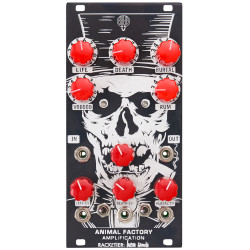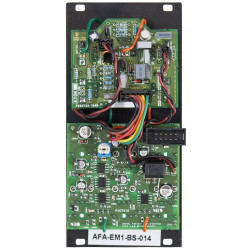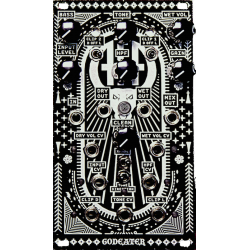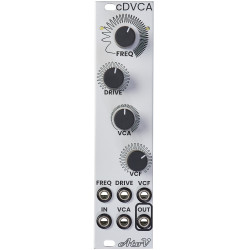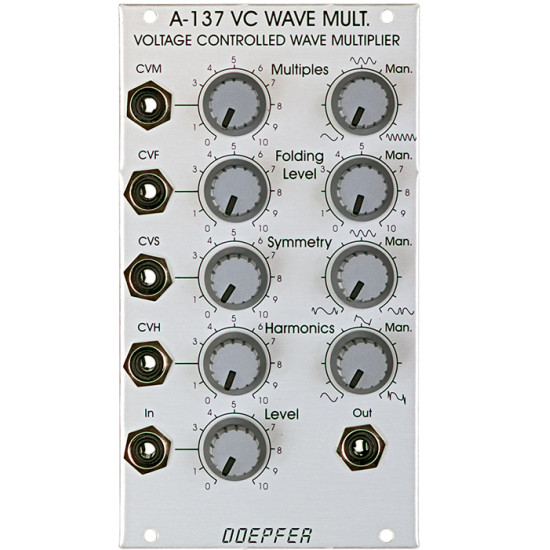
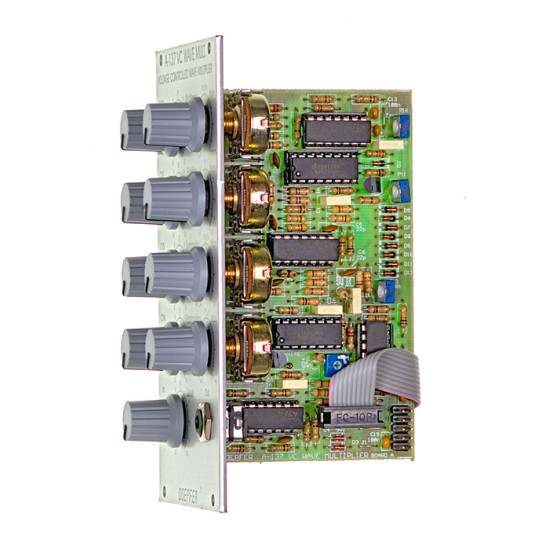


- Stock: In Stock
- Model: DOEPFER-A-137-1
More from this brand
A-137 is a voltage controlled Wave Multiplier. The basic idea of a wave multiplier is to multiply the waveform of an incoming signal (e.g. triangle/saw/sine from a VCO) within one period of the waveform. This leads to additional harmonics of the incoming signal. The period and consequently the pitch of the signals remains unchanged (in contrast to frequency multiplication e.g. with the PLL module A-196). The A-137 works as a kind of "inverse low pass filter", i.e. it adds a lot of harmonics to a signal that contains none or only a few harmonics (e.g. sine or triangle waveform). In contrast to that a low pass filter (e.g. A-120) removes harmonics from a signal that contains a lot of harmonics (e.g. saw or rectangle waveform). Consequently the best results are obtained in combination with input signals poor in harmonics (e.g. sine or triangle). The A-137 can be used with signals rich in harmonics too (e.g. saw) but the effect is not as remarkable as for triangle or sine waves. For rectangle signals none or only little effects are obtained.
The A-137 is a very sophisticated wave multiplier that offers much more features, more controls and more waveform manipulations than other wave multipliers available so far. In addition all parameters are both manually adjusted and controlled by external voltages. These are the features of the module:
Controls:
Input Level (to adjust the input level for best effect of the succeeding controls)
Multiples (number of waveform multiplications, manual control)
Harmonics (additional effect that adds more harmonics similar to the resonance/emphasis control of filters, manual control)
Folding Level (controls upper and lower folding level, manual control)
Symmetry (controls symmetry between upper and lower folding level, manual control)
Inputs/Outputs:
Audio In (also suitable for control signals)
Multiples CV In (with attenuator)
Harmonics CV In (with attenuator)
Folding Level CV In (with attenuator)
Symmetry CV In (with attenuator)
Audio Out (resp. processed control signal output)
The Multiples parameter (manual and ext. CV) defines the number of basic wave multiplications within one period. With the Folding Level and Symmetryparameter (both manual and ext. CV) the upper and lower clipping levels of the wave folder units are controlled. The Harmonics parameter (manual and ext. CV) adds some harmonic content by sharpening the waveform edges and adding overshoot peaks. It works a little bit like the resonance control of a VCF. The module is fully DC coupled, i.e. even control signal can be processed with the modules.
As it is a little bit difficult to describe the parameters only by words we have some pictures and audio examples available that explain the function of the module and its parameters.
For more detailed information please look at the English user's manual ![]() A137_man.pdf
A137_man.pdf
| ||||||||||||
Blockschaltbild des A-137-Moduls / Sketch of the A-137 module
The level control is used to adjust the the input signal (audio or control signal) to a level that creates the best effects when the 4 parameters of the module are altered. The signal is processed by a VCA and 4 so-called wave folding stages. From the parameters Folding Level and Symmetry the upper and folding level is derived for each stage. At the clipping levels the signal is "folded back", i.e. the direction is inverted or the signal is "reflected" at the clipping line. The working principle of the first folding stage is shown in the next picture. As the module contains 4 folding stages up to 8 foldings are possible (4 at the upper and 4 at the lower clipping level).
| ||||||||||||
-285x169.png)
